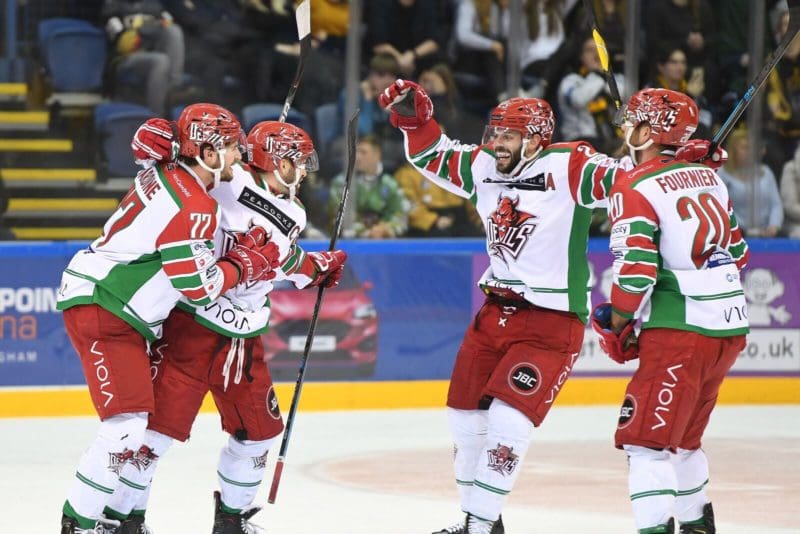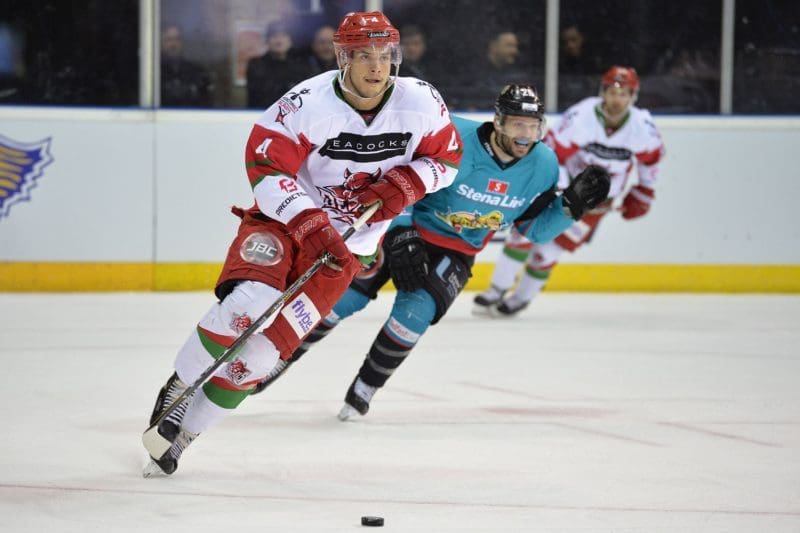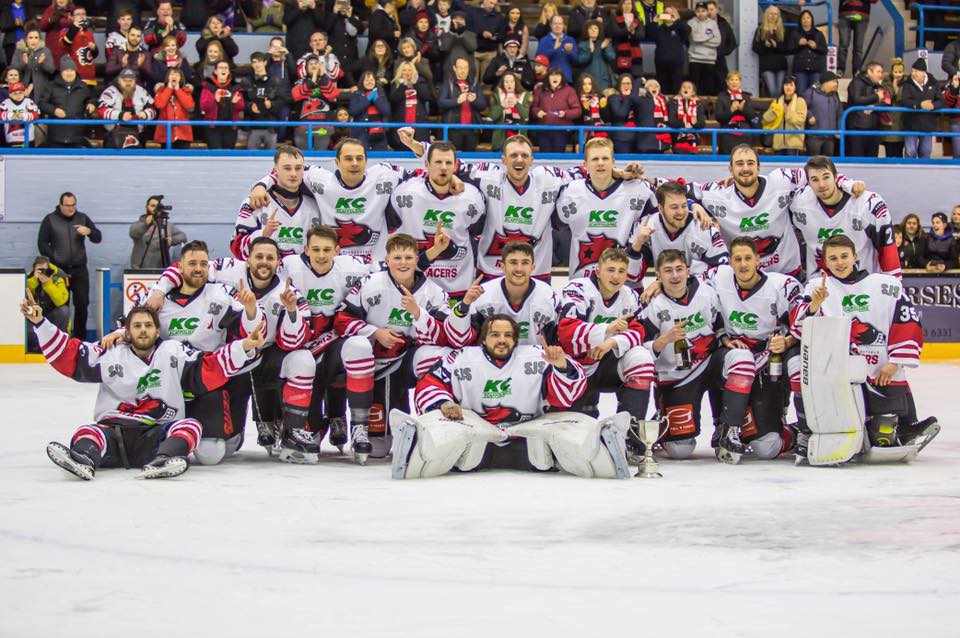“The Titanic is an unsinkable ship.”
“I’m sure filling the Hindenberg with hydrogen will be fine.”
“We will increase import limits to help develop British players.”
OK, all three of these are paraphrased, and while increasing import limits won’t cost hundreds of lives, it does rank highly on the list of stupid things to say.
Both the Elite League and EPL have decided to follow this route – the Elite League on the basis there are not enough British players of a high enough quality, the ones there are cost too much and the ones coming through from lower leagues are not good enough.
The EPL has stated similar reasons – the standard has risen and they would like to see that continue (unspoken – clubs can’t afford high end British players so have increased the import limit to compensate).
Maybe we’re missing something here, but this actually looks pretty cut and dried – it boils down to the very basic rules of supply and demand.
Demand is high, supply is limited so prices rise.
There are 10 Elite League teams – they are allowed a maximum of 14 non-British players (11 requiring work permits) meaning they need to find eight Brits each.
Realistically they’ll have four to six, but it’s a maximum of 80 Brits needed who are capable of playing at that level.
There are, for the moment, 10 EPL teams needing five non-EIHA trained players each, so every team requires a maximum of 17 Brits – 170 across the league.
Something everyone agrees on – there are not 80 Elite capable Brits willing to play in the EIHL, nor are there 170+ Brits willing or capable of playing EPL.
What people can’t agree on, especially those in charge of the EIHL and EPL, is how to fix this.
There are two simple approaches to resolve the problem of supply and demand.
Either artificially reduce the demand until supply matches or exceeds demand, or increase the supply until it matches or exceeds the current demand.
So it appears the clubs in both leagues have taken to decision to go with the first option by reducing the numbers of British trained players required as the other option is, in their opinion, not feasible.
They are wrong.
Now that’s a bold claim to make, can it be backed up? Yes. Here’s how.
Two years ago a club parted company with their coach mid-season and brought in a well-known and highly regarded player/coach from another club.
By the end of the season this coach had turned around the fortunes of the club, so despite finishing outside the play-off places by a single point it was seen as a success.
The team owners began planning for the following season. During the summer the club was approached by an individual with a solid hockey background and an apparently unique set of skills.
This individual was a development coach. He worked with players on an individual basis helping them to improve facets of their game.
He didn’t just work with the junior players stepping up, he worked with all of them, even the senior imports, giving them pointers and tips on their game.
He also worked all manner of voodoo with team building and worked hand in glove with the team’s head coach to support his aims for the team by helping to improve the overall performance.
The proof of this approach took a single season to show itself and that team won their first legitimate piece of silverware in six seasons.
The following year they were seen as serious contenders, having gone from ninth to fourth to second in their league.
By having a development coach this team, with the ‘sixth highest budget in the league’* was able to punch well above its weight and bring some excellent junior players through at the same time.
The concept of a development coach and player development is pretty simple, and while the team mentioned above are in the EPL, a high end Elite side is taking a similar and more formalised approach which should show results very quickly.
So how will this work?
In broad terms, if an Elite side spends time to develop all of their players, two things happen.
Their on-ice performance improves, and their off-ice reputation among players improves.
This makes it easier to recruit and in turn can help to drive down costs to a level that is sustainable for teams, and acceptable to players.
The real bonuses for on ice performance kick in in year two, as do the off-ice bonuses.
In the first year lines 1-4 receive development so that any player could theoretically step up to the top line to cover any absentees.
Effectively though, your four line team has two first, one second and one third line against teams with a regular 1st, 2nd, 3rd and 4th line.
The team is successful, other teams look at what they do and copy it because it works.
In year two you lose some players because other teams want the best players and offer silly money.
You backfill those lost players with current players with little loss to continuity, recruiting from the league below to fill your 4th line spots.
Your budget remains lower and the quality, because your players are being developed, remains higher.
You find it easier to persuade players to step up because they’ll be developed and not just sit on the bench being expected to learn by osmosis (apparently just playing alongside better players is enough to develop according to some ‘respected figures’ in British Hockey) which also helps to keep costs down.
The most common arguments against this approach are easily defeated.
“Development coaches are expensive and will take a long time to show a return” – if the team in the story are anything to go by, less than one season will see marked results.
Plus a development coach will cost around the same as a reasonable import and contribute far more – albeit indirectly.
“But what if I develop players and they leave? That’s money wasted” – true to an extent, but not unless they leave. In addition, what happens if you don’t develop players and they stay?
This also scales down to the EPL, and NIHL comfortably as well, as shown by the example in the story above.
If clubs across Britain could get past their ridiculous ‘us and them’ attitudes and work together, you would potentially solve three major problems facing British hockey within 18 months.
Not enough players of a high enough standard – that’s sorted as you’ve created them.
The need to keep costs down – supply and demand: you’ve increased supply so prices will fall.
There will be a good supply of GB players capable of getting the national side promoted.
Put politely, this really isn’t rocket science and is the foundation of virtually every business in existence.
Except one it seems…
PS: If you haven’t worked out who the story was about, the team were Peterborough Phantoms, the coach was Slava Koulikov and the development coach was Lee Elias. It really does work – they proved it.
* The EPL operates on the principal of ‘Schrodinger’s budget’ where every team in the league has the sixth highest budget in the league – until actual figures are confirmed this is both true and false at the same time.
(Image permission: IceHockeyMedia)







Michael
20th May 2016 at 6:29 pm
You mentioned Koulikov, and as soon as I read it I knew exactly who it was. As a Slough fan, I’ve never forgiven him for leaving us and sending us into a massive downward spiral, that not even a KHL goalie could take us out of.
Dan Breen
20th May 2016 at 8:01 pm
To be fair, as I understand it things between the owner, Kulikov and some players had broken down to the extent that he was given permission to look around and leave.
I do understand where you’re coming from though.
Trevor Troth
21st May 2016 at 2:12 am
I have to admit to only loosely following British Ice Hockey for a number of years (I gave up my Telford season ticket before moving to the Isle of Man, and Trafford had ceased to exist long before that), I still did travel all over to watch the game for a time (at one point Belfast was the only one I hadn’t visited), and whilst I agree with much of the article, I can understand why some teams would be reluctant to follow the philosophy of development IF the game hasn’t changed somewhat from when I paid closer attention to it. Back then numerous teams had developed good young talent only for ‘richer’ clubs to steal them away, Sheffield being a prime example of the ‘thieves’, but even earlier than that when Fife had decent youth development it was impossible for them to hold onto what they developed. Even worse was to see young players developing further by warming the benches of Elite league teams. I can only imagine developing piles must be a prerequisite for a good young British player these days. Needless to say I consider that the establishment of the Elite League was the death knell of British ice hockey in my eyes and now I only watch first class foreigners albeit on my PC (Cheaper too!) I won’t profess to think I have the answers and I’m sure some of what I saw was greed from the young Brits too, but surely the teams should be REQUIRED to have some form of development program? Every top drawer nation in the world has them in some form or other…..if we ever hope to be top drawer again then maybe we should consider following suit?